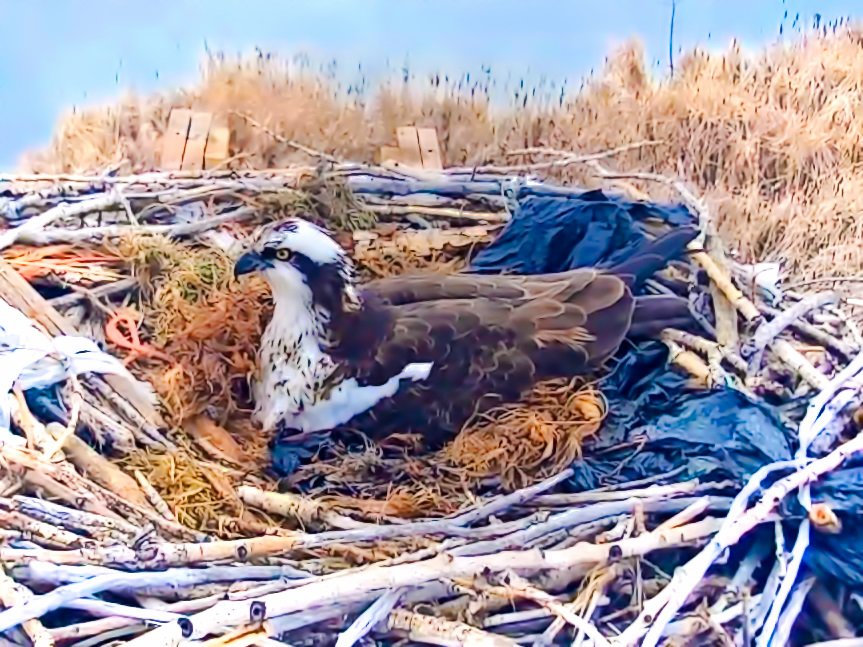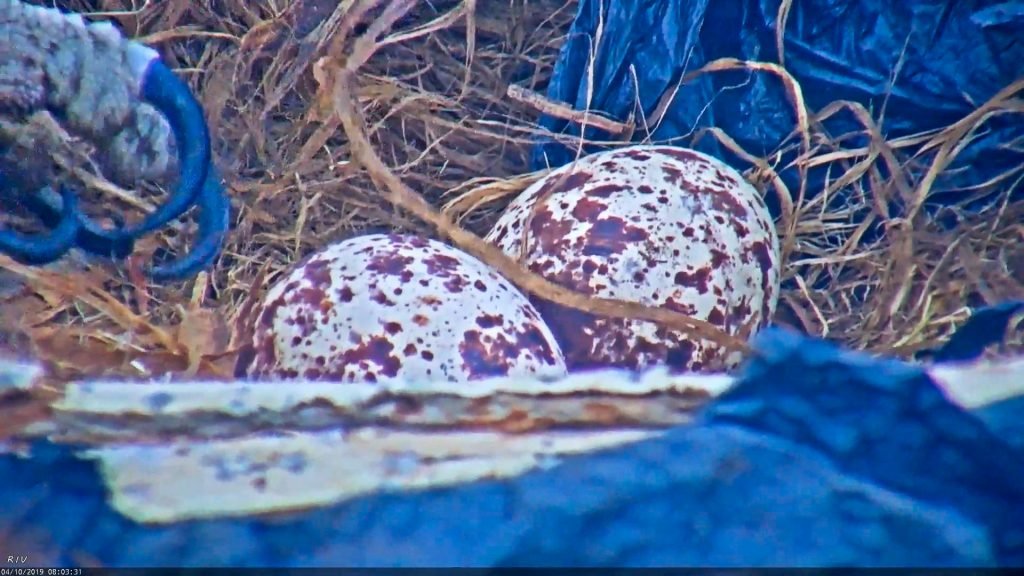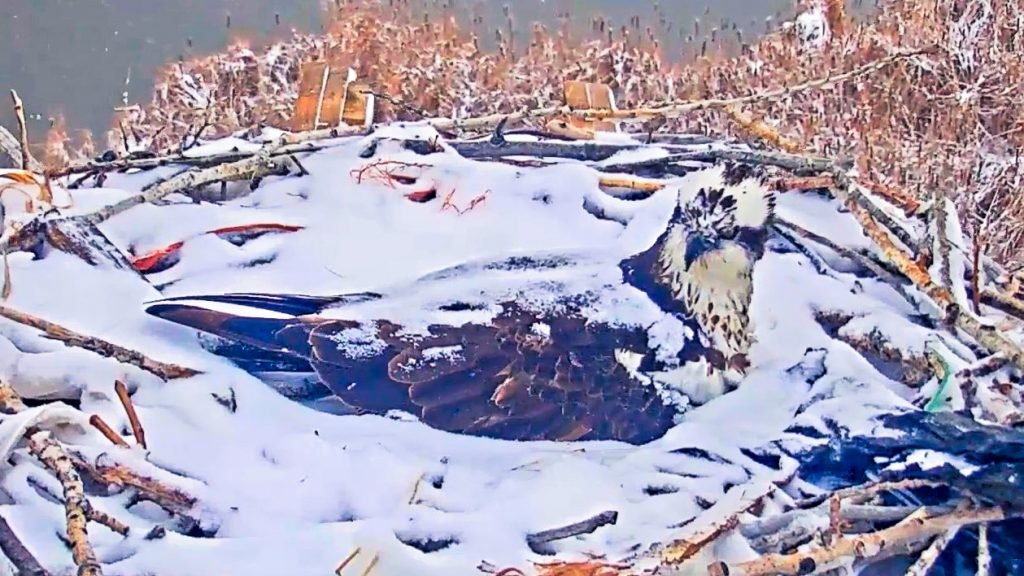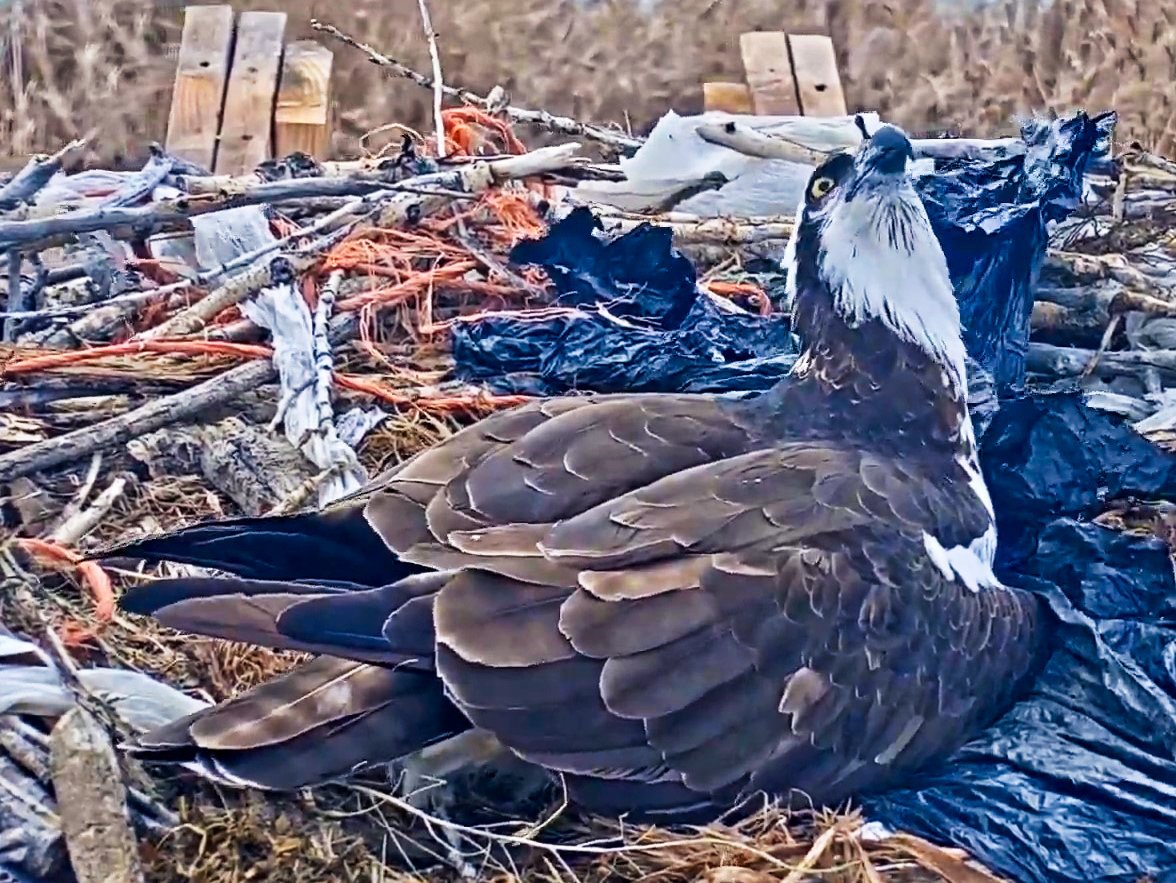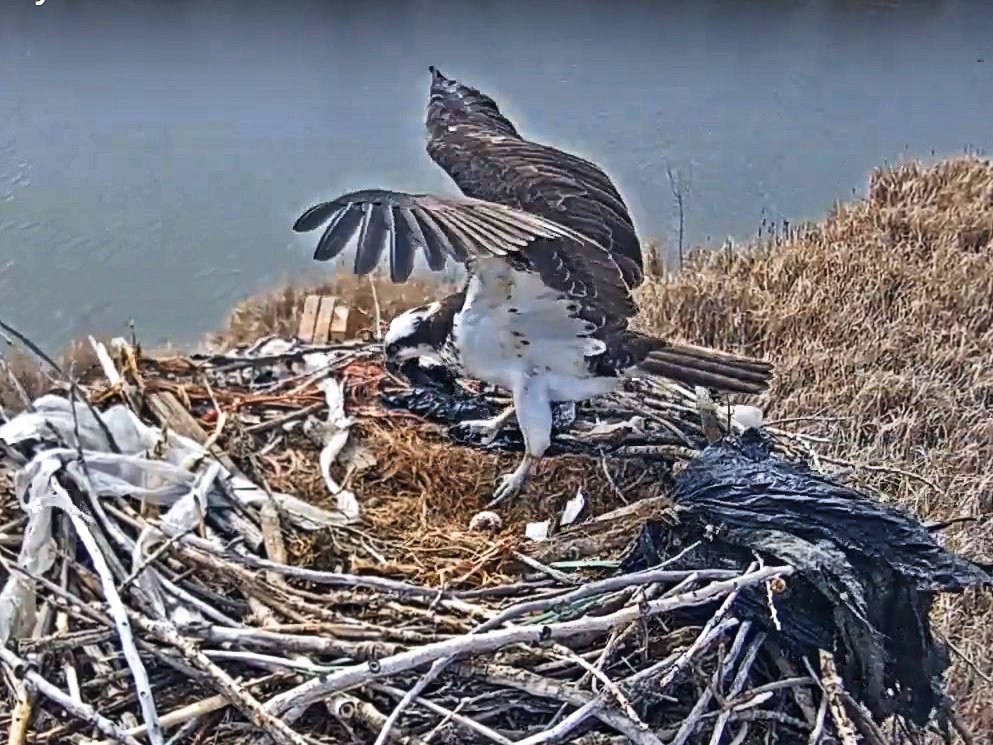MAY ARCHIVES | APRIL ARCHIVES | MARCH ARCHIVES
Notes
DATES AND STATS | WHAT TO EXPECT
This was another peaceful day, with one large fish shared and very light intruder activity. Bark and a few sticks were brought in, but no plastic. There were two mating attempts, the first aborted before much contact, and the second an intermediate variety. A good day for our Osprey family. 🙂
There was some speculation in chat about why the clutch size was three this year rather than four, including about whether it was due to mom’s age or the nest size, etc. Speculation is great! That’s often how we discover aspects to observe in future. However, it helps to speculate from a solid foundation.
The most common number of eggs for migrating North American Ospreys is three. (Non-migrating pairs in subtropical areas often lay two.) Only 10-20% lay four–and that doesn’t mean a given female lays four every single year. We’re accustomed to mom laying four because she’s done so for the past four years. But in 2014, there were three eggs laid and three fledges. In 2013, all we know is that at least one egg was laid and there was one fledge. Given we have no signs of issues with mom, three eggs isn’t an indicator of a problem or aging–it’s Osprey-normal.
As for nest size, the bowl isn’t significantly smaller than what they have had in the past (though a touch cluttered on the left), and isn’t small by Osprey standards. See the image comparison between 2018 and 2019 below. Particularly, use dad’s beak and wing tip as points of reference.
Then, check out this link and scroll down to see a pic four healthy youngsters on a small nest. (The nest is down inside the basket.)
Images and Videos
The Day in Images
Jigsaw Puzzle
Click here to go to puzzle page!

Good night, mom. Good night, dad. Good night, little ones!
Be sure to visit the Boulder County Osprey Cam chat for the latest information and interaction.
For notes with videos from previous days visit the archives.
Videos
































































































